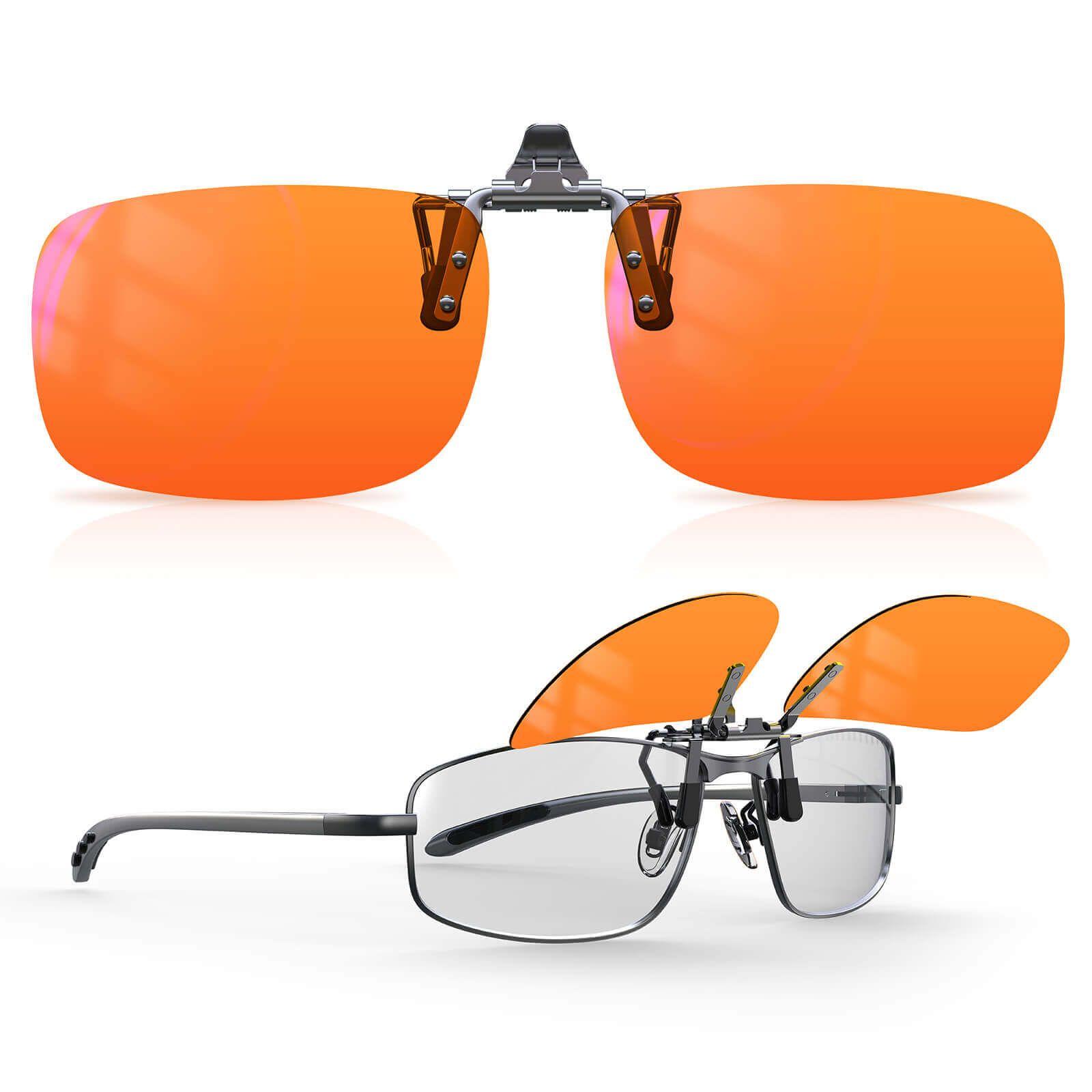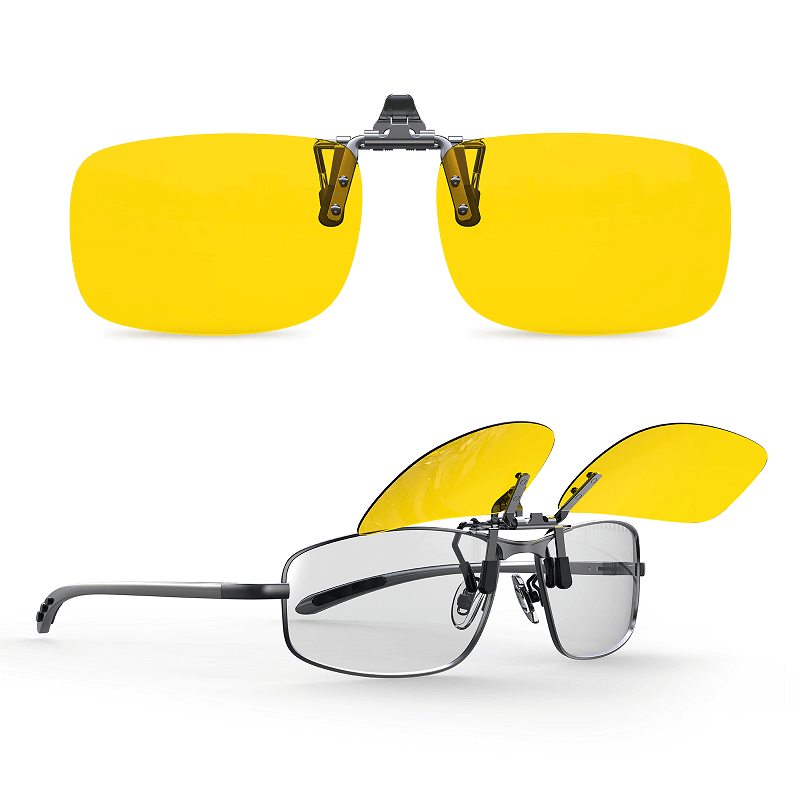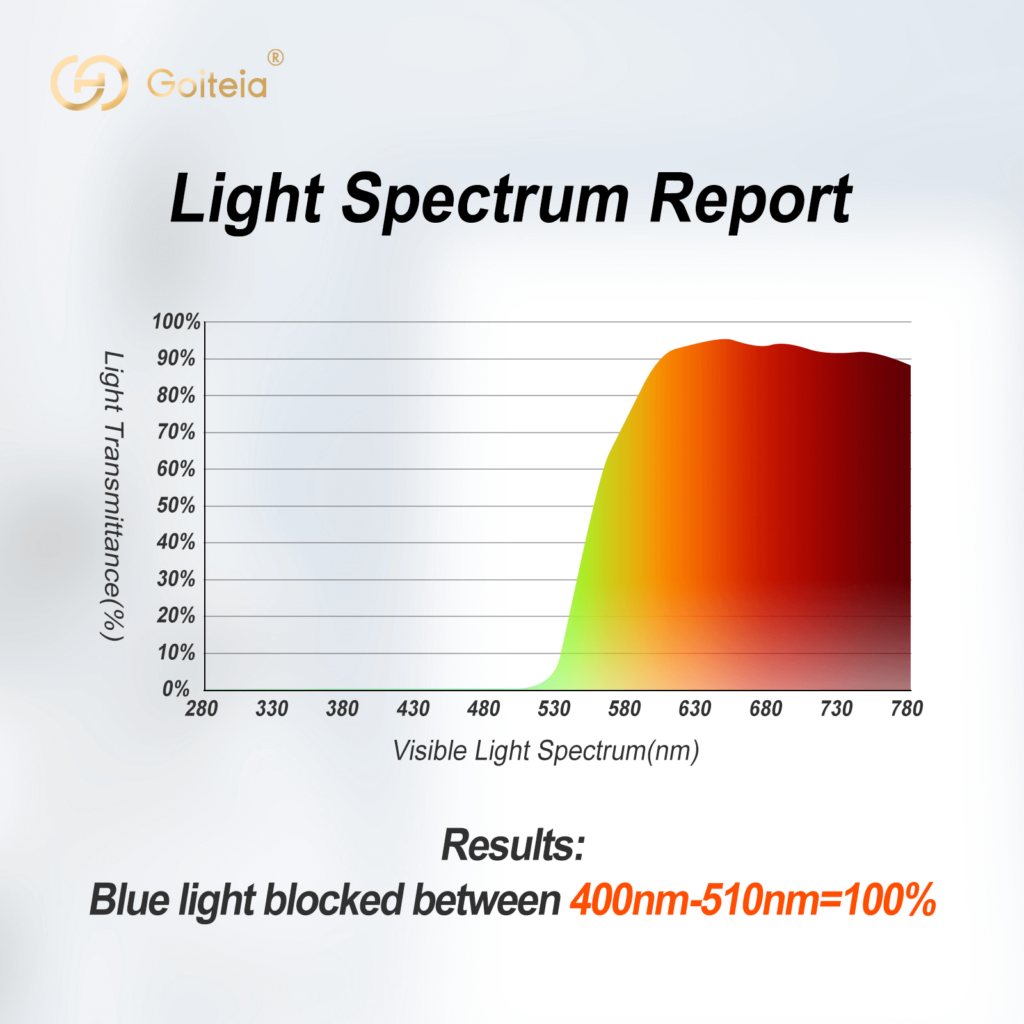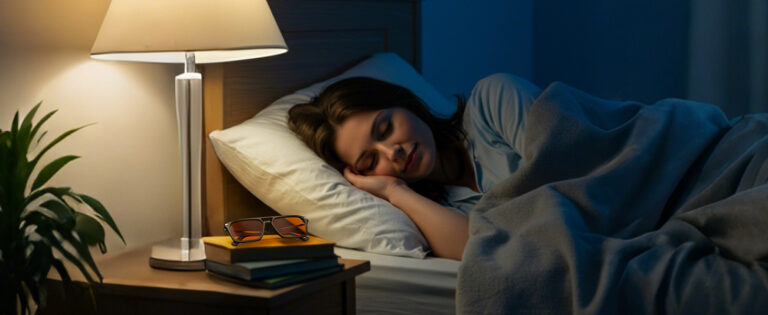Free UK/DE/FR/IT/ES/US Shipping SHOP NOW
Presbyopia, that annoying thing where your close-up vision starts to go blurry, isn’t just for older folks anymore. These days, more and more younger people are dealing with what we could call “early presbyopia.” It’s especially common in people over 35 who find themselves holding books at arm’s length or squinting at tiny text on their phones, leading them to consider reading glasses. Here are some real thoughts and feelings from people with presbyopia:
- “It happened. I got reading glasses.”
- “I started wearing glasses when I was 15.”
- “I had an optometrist recommend reading glasses for farsightedness when I was 11. My dad started having problems reading right when he turned 40.”
“I’m nearsighted and not long after I turned 40, I started needing to take off my glasses to read.”
- “I needed reading glasses at 15 because close-up tasks were getting tough, while my dad only started needing them at 40.”
- “I’m nearsighted and found I needed reading glasses after turning 40.”
It’s clear that many people aren’t ready for presbyopia and the challenge of picking out the right reading glasses for men or women. Many people who opt for myopia lenses overlook the need for reader glasses for men or go for cheaper alternatives that might actually harm their vision. Low-cost reading glasses often fall short in correcting vision properly and can lead to issues like eye strain, dry eyes, and more severe problems like sleep disturbances, dizziness, and nausea. So, how can you find reading glasses that meet your needs without breaking the bank?
Understanding Presbyopia
What is Presbyopia and Its Causes
Presbyopia is a natural part of aging, where the eyes lose the ability to focus on close objects. It typically begins in your early to mid-40s and can worsen up to about age 65. This condition occurs because the lens inside your eye becomes less flexible, making it difficult to switch focus from far to near. Imagine your eyes as getting a bit rusty with age!
Interestingly, sleep deprivation can increase the risk of developing presbyopia. Maintaining good sleep habits might delay the onset of this condition. Poor sleep, particularly from irregular work hours or disruptions in your circadian rhythm, can accelerate presbyopia’s progression.
Research from the BCLA CLEAR study reveals that presbyopia’s onset can be influenced by factors like genetics, lifestyle choices, and overall health. This sheds light on why some people might experience it earlier than others.
Symptoms and How to Recognize Them
Identifying presbyopia is straightforward if you know what to look for. Common signs include difficulty reading small print, needing to hold reading materials at arm’s length, and experiencing eye strain or headaches after close work. If you’re squinting at your phone’s tiny text, it’s a sign you might need reading glasses.
One user shared, “The doctor explained that my headaches were due to the strain from trying to read small text. The glasses helped ease the strain, and the headaches disappeared. I hope this information helps others as well.”
Misconceptions and Facts
Presbyopia Occurrence in Younger Age Groups
Presbyopia is often associated with older age, but younger individuals can experience it too. Factors such as genetics, excessive use of digital devices, and certain health conditions can cause presbyopia to develop earlier. So, if you’re young and struggling with near vision, don’t ignore it—get your eyes checked. Presbyopia-like symptoms can occur at any age due to various conditions beyond normal aging.ditions beyond normal aging.
According to the BCLA CLEAR Presbyopia: Epidemiology and Impact study published in 2024, “The global prevalence of functional presbyopia (excluding those with useful myopia) was estimated at 24.9% in 2015, affecting about 1.8 billion people. This prevalence is expected to stabilize at 24.1% in 2030 but will affect more people due to population growth.” The study also forecasts an increase to 36.6% prevalence, affecting 3.1 billion people by 2030.
The BCLA CLEAR study also notes that presbyopia can develop in younger adults, especially those who engage heavily in near-vision tasks or have underlying health conditions, challenging the belief that this condition only affects older people.

Preventing Presbyopia
Are There Exercises or Practices That Can Reduce the Need for Reading Glasses?
Eye exercises, like focusing on distant objects or performing figure-eight motions with your eyes, might help manage symptoms but won’t prevent presbyopia. These exercises can alleviate discomfort but won’t stop the condition from developing. Adopting the 20-20-20 rule—taking a 20-second break every 20 minutes to look at something 20 feet away—can help reduce eye strain.
Lifestyle Changes to Support Eye Health
A healthy lifestyle has a significant impact on eye health. Regular exercise, a diet rich in vitamins A, C, and E, and reducing screen time can support good vision. Staying hydrated and avoiding smoking are also essential. The BCLA CLEAR study emphasizes that maintaining a healthy lifestyle, including regular exercise and a balanced diet, can play a crucial role in managing presbyopia and slowing its progression.
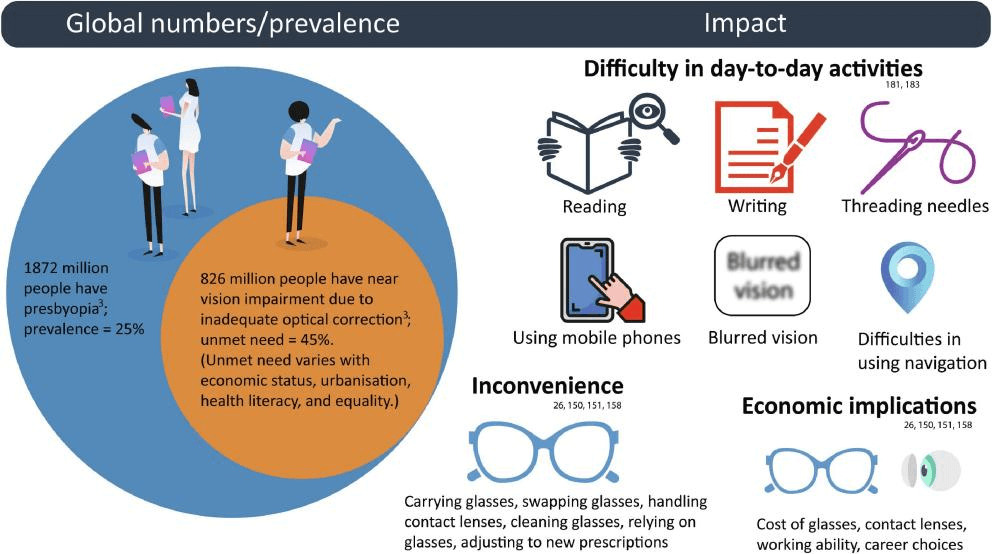
Choosing the Right Reading Glasses
Common Misconceptions About Reading Glasses
Not all reading lenses are created equal. The quality varies, and the right pair can greatly enhance comfort and clarity. A common misconception is that over-the-counter (OTC) glasses are inferior to prescription glasses. While prescriptions are tailored to your needs, OTC glasses can work well for many people.
Safety and Effectiveness of Over-the-Counter Reading Glasses
OTC reading spectacles are convenient and affordable. They come in various strengths to suit different needs but aren’t customized. It’s important to get your vision tested to ensure you select the correct strength for your needs.
Children and Adolescents with Presbyopia
Although presbyopia typically affects those over 40, farsighted children and adolescents might also need reading glasses. An optometrist can provide recommendations if necessary.
Reading Glasses vs. Prescription Lenses: What’s the Difference?
Eyeglasses for reading are specifically designed for close-up tasks like reading, while prescription lenses address a wider range of vision issues, including astigmatism, nearsightedness, and farsightedness. Prescription lenses offer a broader range of correction.
Types of Reading Glasses
Full-Frame Reading Glasses vs. Half-Frame Reading Glasses
Full-frame glasses cover your entire field of vision, making them ideal for extended reading sessions. Half glasses sit lower on your nose, allowing you to look over them for distance vision, which is great for multitasking.
Bifocals vs. Single Vision
Bifocals have two optical powers—one for distance and one for near vision. Single vision glasses have one prescription throughout, which is perfect if you only need help with reading.
Blue Light Blocking Reading Glasses
Regardless of the type of reading glasses you choose, consider those with blue light blocking capabilities. Blue light reading glasses filter out harmful blue light from screens, reducing eye strain and potentially improving sleep. They might slightly alter color perception but are especially useful if you spend a lot of time on digital devices.
Buying Tips for Reading Glasses
Techniques for Self-Assessment
Before purchasing readers, accurately assess your vision needs. Use a reading chart found online or at an optical store, holding it at a typical reading distance of 14-16 inches. Start with the lowest power, usually +1.00, and read through the text, noting any blurriness or discomfort. Gradually increase the power in +0.25 increments until the text becomes clear and comfortable. If you experience eye strain or headaches, consider adjusting the strength or consulting an optometrist for a more precise assessment.
How Often to Have Your Eyes Checked
Routine eye exams are crucial for maintaining eye health and detecting issues early. Even if you’re not experiencing vision problems, an annual visit to your optometrist is recommended. This helps identify potential issues such as early-stage glaucoma or macular degeneration, which might not present symptoms until they progress. For those already wearing reading spectacles, it’s advisable to have your eyes checked every two years unless you notice any changes in your vision. Regular check-ups ensure that your prescription remains accurate and that your eye health is monitored over time.
What Strength of Reading Glasses Should You Look For?
Reading lenses come in strengths ranging from +1.00 to +3.50 diopters. Most people start with +1.00 or +1.25 diopters when presbyopia begins. As the condition progresses, you may need stronger glasses to maintain clear vision. Higher strengths, such as +1.50, +2.00, or even up to +3.50, might become necessary. Choosing the right strength is essential for comfort and clarity, so consider periodic reassessment as your vision changes.
How to Judge Whether a Pair of Reading Glasses Is Professional Anti-Blue Light Glasses
To ensure effective blue light protection, check the packaging for specific certifications. Professional anti-blue light glasses should clearly state the percentage of blue light they filter, with higher percentages generally offering better protection. Look for labels indicating certifications from recognized standards or organizations that verify blue light blocking capabilities. This information helps in distinguishing between genuine blue light reading spectacles and those with unverified claims, ensuring you invest in a product that genuinely protects your eyes from digital strain.
What If My Cheap Reading Glasses May Not Prevent Blue Light
If your current reading glasses are inexpensive and lack blue light protection, consider alternatives like blue-light blocking clip-ons. These can attach to your existing glasses and provide blue light filtering without needing a new pair.
Another option is to upgrade to lenses with built-in blue light filtering from your optometrist, which can be incorporated into new prescription glasses. These solutions help reduce digital eye strain and protect your eyes from potential damage caused by prolonged screen time.
You can judge whether the pair of anti-blue light glasses clips is qualified through the spectrum and glasses qualification.
Tips for First-Time Users Adjusting to New Reading Glasses
When you first start using readers, it may take a few days to a week for your eyes to adjust. Mild discomfort is normal during this period, but if it continues beyond a week, consult your optometrist. Proper fit and lens alignment are crucial for ensuring your glasses function correctly and provide optimal comfort. If you find yourself constantly adjusting your glasses or experiencing persistent discomfort, it might be worth considering a different style or fit, such as men’s reading glasses or womens reading glasses, which are designed to suit specific facial structures.
Considerations if You Already Wear Reading Glasses or Contacts
If you already use glasses or contacts, incorporating readers might feel cumbersome. Multifocal or progressive lenses could be a more practical option, providing clear vision at various distances within a single pair of glasses. These lenses can accommodate both near and distance vision needs, reducing the need for multiple pairs of eyewear. Options like mens reading glasses or womens reading glasses offer stylish solutions for those who need versatile vision correction.
Using Reading Glasses with Existing Eyewear
Wearing readers over your existing eyewear can be done but is often impractical. Bifocals or progressive lenses might be a better solution, allowing you to see clearly at different distances without constantly switching glasses. Some people prefer folding reading glasses, which are compact and easy to carry, making them convenient for use on the go.
Risks of Overusing Reading Glasses
Overusing readers can lead to dependency. It’s important to take regular breaks and practice good eye habits to avoid becoming overly reliant on them. Follow the 20-20-20 rule: every 20 minutes, look at something 20 feet away for at least 20 seconds to reduce eye strain and support overall eye health.
Using and Caring for Reading Glasses
Proper care is essential for maintaining the longevity and effectiveness of your reading spectacles. Clean them regularly with a microfiber cloth and lens cleaner to avoid scratches and smudges. Store them in a protective case when not in use to prevent damage. Handle your glasses by the frames to avoid getting fingerprints on the lenses, and tighten any loose screws as needed. Replace your glasses if they become scratched, damaged, or if your prescription changes, ensuring you always have clear and comfortable vision.
Conclusion
Choosing the right reading glasses is crucial for maintaining clear and comfortable vision. Whether you opt for over-the-counter or prescription glasses, understanding your needs and exploring your options helps you make an informed decision. Keep in mind factors such as your prescription strength, the type of glasses that best suit your lifestyle, and additional features like blue light blocking to ensure you select the perfect pair for your vision needs.
FAQs
What should I do if my reading glasses cause headaches?
If your readers cause headaches, it might be due to an incorrect prescription or poor fit. Consult your optometrist to ensure the glasses are suitable for your vision needs and adjust them if necessary.
Can I use reading glasses for distance vision?
Reading lenses are designed for close-up tasks and are not suitable for distance vision. For comprehensive vision correction, consider bifocals or progressive lenses that accommodate both near and distance vision.
How can I tell if my reading glasses are blocking blue light?
Check the packaging or product details for blue light blocking specifications. Genuine blue light reading glasses should list the percentage of blue light they filter. Look for certifications from recognized standards to ensure effectiveness.
Is it necessary to get a prescription for reading glasses?
While over-the-counter reading glasses can be effective for many people, a prescription ensures that the glasses are tailored to your specific vision needs. It’s especially important if you have complex vision issues.
How often should I replace my reading glasses?
Replace your readers if they become scratched, damaged, or if your prescription changes. Regular eye exams can help determine if your vision has shifted, indicating the need for new glasses.
By considering factors like lifestyle, lens type, and blue light protection, you can find the perfect pair of reading glasses to suit your needs. Whether you need men’s reading glasses, womens reading glasses, or specialized options like blue light reading glasses, there are plenty of choices to help you see clearly and comfortably.


